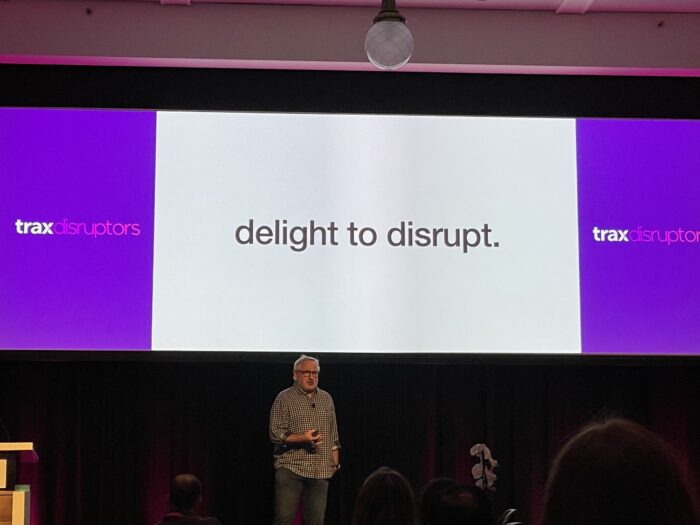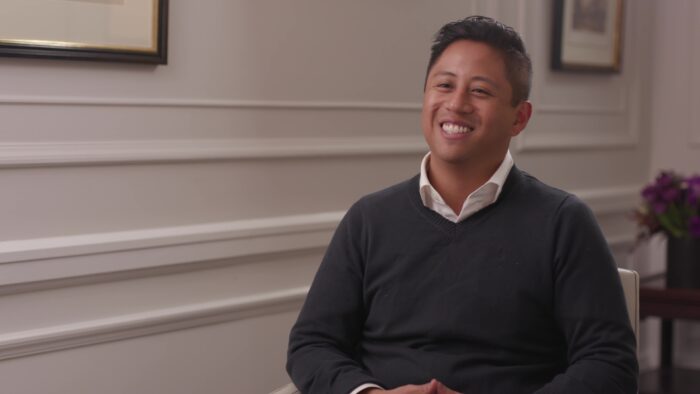Five Challenges that Emerging and Fast-Growing CPG Brands are Facing in 2023
The consumer-packaged goods (CPG) industry is ever-evolving. As the marketplace transforms through new products, new ideas, and new consumer habits, innovators continue to work towards the end goal: being an impactful changemaker. But, the path is not smoothly paved.
In an industry monopolized by a few brands, yet susceptible to overnight viral success, the founders and leaders of emerging and fast-growing CPGs face the challenge of breaking through the noise. At the same time, many find themselves without the funds, bench depth, experience, bandwidth or other resources traditionally needed to make it to “disruptor” status.
To help inform the road forward, sometimes the best advice comes from those who have faced these same obstacles. Whether peers or even competitors, those in the industry can be the best informative resources because, well, they’ve been there, done that and come out on the other side. In the spirit of learning and trading industry secrets and solutions – here are the top five challenges that emerging and fast-growing CPG brands are facing, and solutions from industry leaders, as discussed during Trax’s Disruptor Series event.
1. Take a ‘Delight to Disrupt’ approach

To catch the eye of consumers, you have to bring something new to the table. The next big thing is not always flashy or overly complex – it’s often a product that creatively fills a void in an industry where people need something. Craig Dubitsky, Founder of hello products, Co-Founder of eos, early-stage investor in Method Products and overall industry guru, lives by a “delight to disrupt” mentality. Essentially, in a marketplace where the bar for products is low and execution is mundane, there is plenty of room for entrepreneurs, innovators and creators to find the whitespace: the opportunity to delight consumers with products that are more functional, prettier, eco-friendlier, more affordable, etc.
A great example is Once Upon a Farm. Over time, parents have become wary of prepackaged baby foods, and the marketplace was slow to evolve, with zero fresh food options for young children. The founders saw an opportunity to bring organic, nutritious, perishable (and refrigerated) options to market and delight parents. While revolutionary, Once Upon a Farm not only had to service the customers that were seeking this product, but also had to win over those who weren’t.
Cheryl Vanvalkenburgh, Chief Customer Officer at Once Upon a Farm, recommends taking a cautious approach to brand growth, specifically to give yourself time to educate consumers on your new category of products. By connecting with your target consumers and converting them into loyal customers, you grow your brand, you create brand advocates, and you learn how best to reach others consumers who are like them. The results speak for themselves: Once Upon a Farm is now the #1 baby food in the natural channel.
2. Setting the right pace, in the right direction.

Once the product is established, next comes creating an expansion strategy.
When Sandro Rocco founded Sanzo, it was a one-man, self-funded operation, which meant Sandro had to bring his original product to stores, without extending beyond his resources. It’s no surprise that one of the biggest challenges he has faced has been scaling quickly. While admittedly a good problem to have, it comes with a myriad of issues to consider and overcome. With supply chain issues, inflation, and signs of recession, Sandro recognized that it was, and is, more important than ever for brands to respond to economic factors in their growth strategy. To keep Sanzo ahead of the game, Sandro chose to stay close to home and let velocity drive growth, rather than setting and attempting to meet unnecessary distribution goals. This allowed him to meet his consumers where they wanted him, without overextending.
President of clean energy beverages products brand EBOOST, Matt Spolar can also attest that bigger and faster is not always better when it comes to the race to scale. In fact, going fast can harm a business more than it can help it. Instead, it is preferable to dive deeper into specific channels. EBOOST did this by introducing EBOOST to a marketplace dominated by two energy drinks brands that focused on one demographic – men ages 18 to 31 – that had a stronghold on convenience stores. By recognizing where their competition excelled, the EBOOST team chose to hyper-focus on an older age demographic and increase their scale at drug and specialty stores first, rather than trying to compete at convenience stores. This approach allows brands, like EBOOST, to nurture relationships within the industry and specific retailers, as well as ensure the product is in the right places and that vendors are well-versed on the product. Ultimately, it connects you with your target consumer.
3. Being adaptable and stay focused amid volatility.
Unfortunately, we can’t predict the future. So even a great product with a perfectly-laid plan can be susceptible to issues in getting to the marketplace. Anyone in the industry knows that supply chain and distribution can make or break a brand, let alone one that is emerging or fast-growing. But, how can brands best ensure success, even when you hit unexpected bumps along the way?
Pitaya Foods saw a boom in sales during the pandemic, but had to approach distribution in a less traditional way. Amidst lockdowns and in-store restrictions, CEO and Founder Chuck Casano saw an opportunity to continue growth without depending on stores: D2C sales. This was not an uncommon move during the pandemic, but Chuck and team found ways to make the most of it. In addition to sales directly on their website, working with partners such as Instacart and Amazon allowed Pitaya Food’s consumers to access their products countrywide without additional costs. They continued to make the most of this change by developing a heat map of orders across platforms. So, when the time came to go back to brick and mortar retail, the Pitaya Foods team would have data to support better distribution decisions – reaching their consumers much more effectively.
When your product is seasonal or susceptible to major shifts, having good connections can make all the difference. MISSION creates innovative heat-relief technology, which can be in very high demand depending on the circumstances. Senior Director of Sourcing Caleigh Mucci had seen the impact of seasonal temperature changes and heat waves, but nothing prepared the company for COVID. During the pandemic, MISSION’s products – some that had been steadily in their portfolio for ten years – went from one million orders in a month, to one million in a week. During such a time, being on the shelves when the customers and retailers needed it the most was critical. From this and her 11 years at MISSION, Caleigh advises other brands to stay focused on what you do and do it well. By remaining disciplined in-house and embracing sourcing and logistics partners as an extension of their own team, they were able to overcome these challenges.
4. Raising your shelf game with eyes in the store
Without previous knowledge or research, the marketplace can look overly saturated to the average consumer. Shelves are full of options – and with the attention spans of shoppers in a store being so fleeting, you may only have a moment to make your case.
Founded by Iron Chef Ming Tsai, MingsBings had a leg up when it came to name recognition: being associated with a public figure. But, unlike the chef’s name, “bing” – a traditional Chinese food with no Americanized counterpart – does not ring familiar with the average consumer, especially amidst the hot pocket, frozen meal and Asian food aisles. This first-of-its-kind product, both gluten-free and vegan, met a unique challenge in standing out in the crowd, while still being approachable to the consumer.
As Chief Marketing Officer of MingsBings, Ashley Christensen saw that in CPG space, being on the shelf is one thing, but being well-positioned on the shelf is another. One of the brand’s greatest challenges is having its product in retailers, but being unable to see what’s happening at shelf level. While it is impossible for a team of 16 people to monitor the 1000 stores where MingsBings is available, technology can act as a set of eyes in store. Companies in similar situations to MingsBings should consider investing in shelf-monitoring technology so they can see what is happening in-store, without having to physically be there.
Matt Weiss, Founder and Chief Executive Office of RIND Snacks, has found store auditing and dynamic merchandising, such as that provided by Trax, to also be indispensable in the company’s journey toward shelf visibility. Matt found that basic auditing work helps ensure that if you’re in 1000 stores, you’re actually in all 1000, and are in a place where you are seen by the shopper. Matt recommends building merchandising displays at high-traffic points, like end caps and checkout, to give your product a higher chance of making it in a consumer’s cart.
5. Finding friends.
Whether you’re six years or six days into your CPG journey, there are challenges faced every single day. However, the best thing about the world of retail is that brands and founders are not alone.
Bottled coffee company Pop & Bottle has been through many changes over the past few years to stay ahead of the game. From transitioning to D2C sales during the pandemic and back to retail after, the company has overcome many obstacles. They attribute success partially to finding good partners. In fact, Jessica Pratt, Chief Sales Officer at Pop & Bottle said it best: “Find champions of your brand who share your passion.”
Not only can brands learn from each other, they can also learn from, and leverage, partners like Trax to help alleviate some of the pain-points in their emerging and fast-growing CPG businesses.
To learn more about Trax, visit: www.traxretail.com
